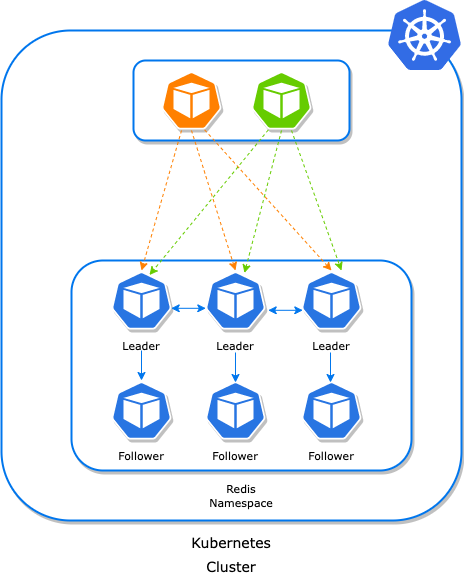Cluster
Architecture
A Redis cluster is simply a data sharding strategy. It automatically partitions data across multiple Redis nodes. It is an advanced feature of Redis which achieves distributed storage and prevents a single point of failure.
In case of any redis node failure, a follower pod will automatically promote as the leader and whenever the old follower node will come back online, it will start acting as a follower. There are a minimum of 3 nodes required to build a Redis-sharded cluster with leader-only architecture. If we include followers as well, there will be at least 6 pods/processes of Redis.

Helm Installation
For redis cluster setup we can use helm command with the reference of cluster helm chart and additional properties:
Verify the cluster by checking the pod status of leader and follower pods.
If all the pods are in the running state of leader and follower Statefulsets, then we can check the health of the redis cluster by using redis-cli.
YAML Installation
Examples folder has different types of manifests for different scenarios and features. There are these YAML examples present in this directory:
- additional_config
- advance_config
- affinity
- disruption_budget
- external_service
- password_protected
- private_registry
- probes
- redis_monitoring
- tls_enabled
- upgrade_strategy
A sample manifest for deploying redis cluster:
The yaml manifest can easily get applied by using kubectl.